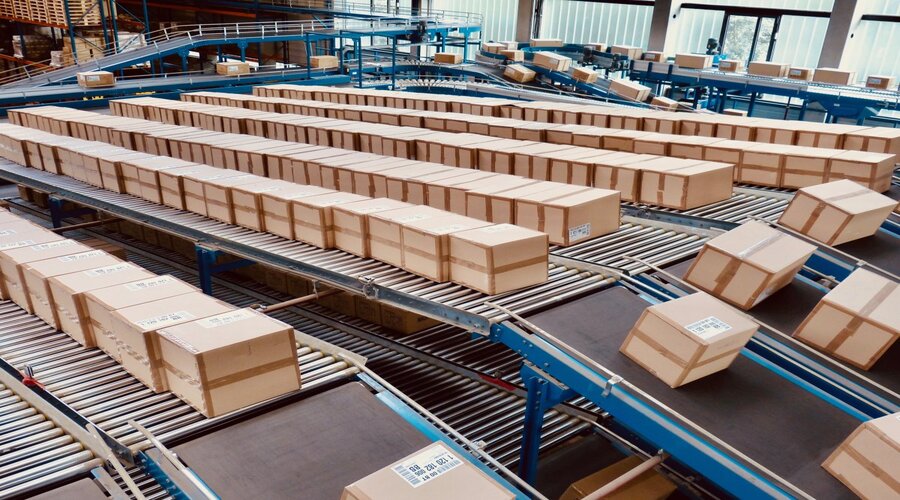
When it comes to the world of supply chain automation, robots are more about increasing efficiency and less about the whole enslaving humanity angle.
It’s no secret that the need for flexible, precise, and supply that is nimble logistics is on the rise. As consumer and client bases continue to grow at an unprecedented rate, supply chains will need to adapt to larger, more complex methods of information and product transportation. But, there are many time-consuming processes that go alongside building a successful supply chain.
With supply chain automation, businesses are in a position to identify these repetitive tasks and discover ways to simplify them using technologies that are widely accessible in the market.
Here’s exactly how automation can effectively be used within the supply chain:
Back-Office Automation: Robotic process automation (RPA) in the supply chain helps businesses achieve end-to-end document automation using artificial intelligence and OCR. This gives human employees more time for problem-solving and works that are certainly brainstorming.
Transportation Automation: Despite technical and regulatory challenges, autonomous vehicles remain a promising prospect on the part automation will play in the future of logistics.
Warehouse Automation: A 2020 Raconteur report reveals that warehouse automation is the top technology invested in by companies across industries planning to cut delivery times and improve overall margins. Material handling operations run fluently and efficiently when a warehouse is fully combined and programed
A connected supply chain supported by automation technologies provides the opportunity to free employees from these menial, manual tasks. The advantages of automation, both in and out from the warehouse include increased effectiveness - manifested by increased fill rates and reduced cycle times, in addition to increased warehouse throughput time, reduced labor and operational costs, elimination of human error, and improved inventory management.
Customer Service: Automation expedites order fulfillment, which could be tiresome each time an employee is assigned to discover a product, pick it up, and transfer it to be shipped out. Automatic warehouses have actually started implementing pick-and-pack robots that can quickly traverse a warehouse and discover appropriate objects via Stock-keeping units (SKU), Universal Product Code (UPC), and sometimes even Radio Frequency Identification (RFID). These robots get when they have to go, without the need to briefly leave another task to fulfill another.
The advantages of logistics automation may not be ignored. Workers invest a lot of time determining the way that is the optimal way to pack a truck, plan the most efficient route, report transit status to clients, and link the right truckers to your right shipments. Supply chain automation streamlines this procedure with the use of logistics AI to figure out and do all of these tasks, all the while saving you delivery costs.
A recent report shows that labor shortages continue to rise. As the world of e-commerce continues to grow exponentially, warehouses are receiving trouble finding staff members to keep up with demand. As demand will continue to increase, warehouses are going to consistently seek techniques to stay appropriate in the face of labor shortages — enter the robots. More and more warehouses will probably be embracing robotization to ease a number of the stress labor shortages are causing. Although, some believe that this is only a short-term solution and that companies need to change their recruiting and retaining methods to survive.
Although this tech continues to be dealing with development, onboard truck automation can be expected to work in tandem with drivers to improve vehicle protection and control for drivers as well as other vehicles on the way. These automated inclusions will be able to pass significant amounts of trucking and driver data back to managers, who are able to then predict and plan on a lot more efficient trucking practices.
Whether this can be adjusted to a warehouse that is continuously altering giving users more visibility into their supply chain, machines are going to need to be able to adjust. As supply chain automation improves, more obligations are supposed to be passed on to autonomous processes. In the future, the supply chain will soon be closer to living breathing organisms as automated features should be able to rapidly ramp up or measure a product cycle as demand waxes and wanes.
Supply chain automation is on the rise, and there truly is no stopping the adoption of supply chain management software as time goes by. As you will probably see, their consumption is distributed like wildfire once we find out how exactly to produce cheaper robotics and fine-tune. With 13SQFT.COM Services, you can evolve your supply chain processes into intelligent workflows, to reach new levels of responsiveness and innovation.
POSTED BY
Ishika Adhana
Digital Marketing Executive